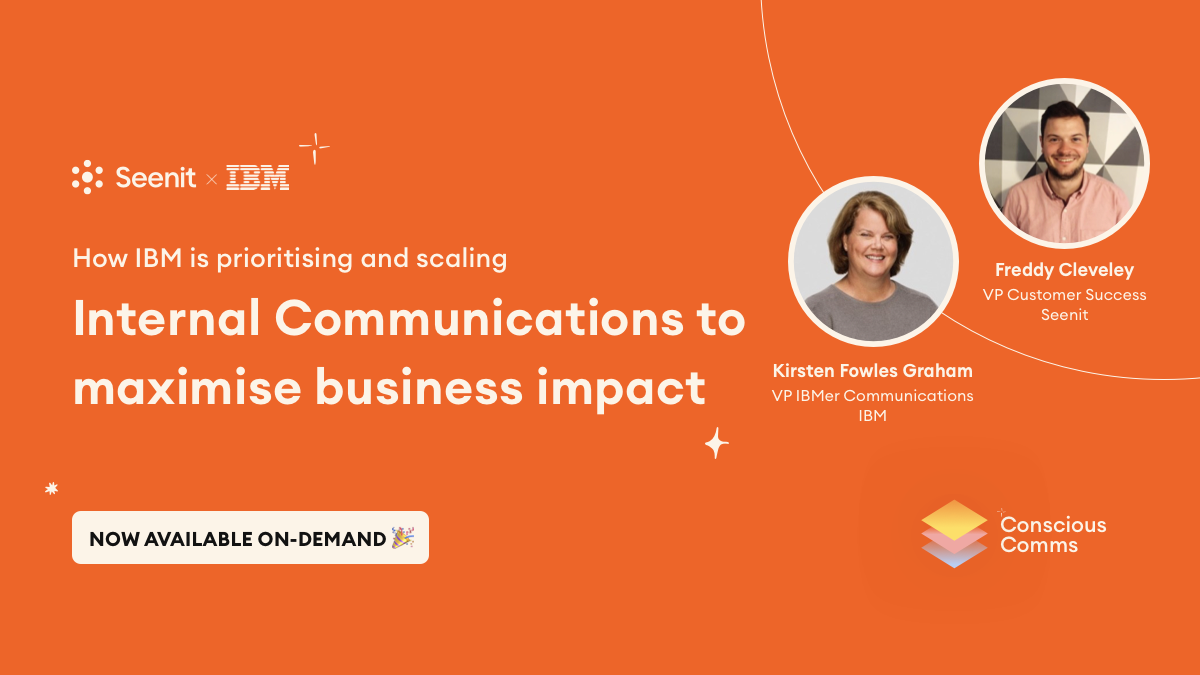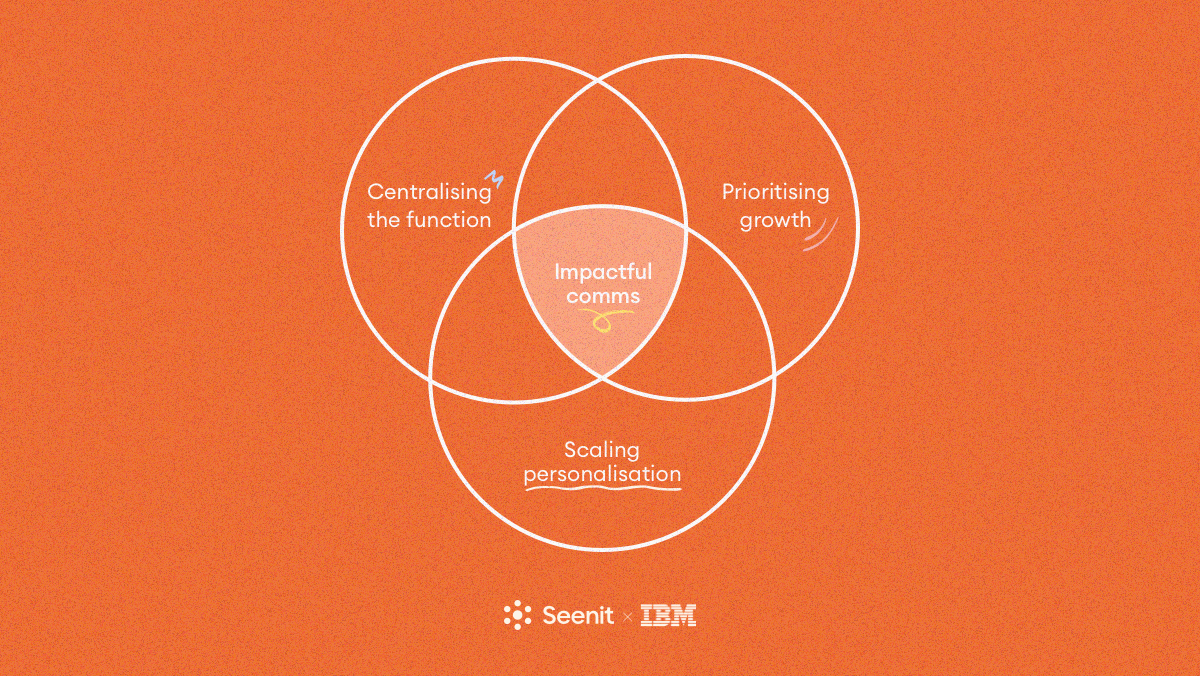
About This Webinar
On the 27th of July, we welcomed Kirsten Graham, Vice President of IBMer Communications, who has been with the company for over 25 years and currently leads Internal and Executive communications at IBM. With her extensive experience and expertise in communications, Kirsten has played a pivotal role in driving the transformation of IBM’s internal communications strategy alongside having been the chief of staff to current CEO, Arvind Krishna.
We delved into IBM’s recent strategic shift, which involved centralising communications into a unified, dedicated team. By bringing together these vital communication functions, IBM has aimed to streamline messaging, foster alignment, and enhance collaboration across the organisation. In addition to this, we discussed the reasons behind this centralisation, examining the benefits it offers, as well as the challenges and learnings encountered along the way.

Centralisation of Internal and Executive Communications
Kirsten shared the journey the Internal and Executive communications teams have been on to be more agile and data-driven. Before merging into one, teams reported to their specific business units, leading to challenges in prioritisation, cohesiveness, and functional decisions.
“We were scattered, and we were also siloed”
Kirsten Fowles Graham
Throughout the process, Kirsten explained how the team went through the 4 stages of team development (Bruce Tuckman, 1969): forming, storming, norming and performing.
“These phases of group development are all necessary and inevitable in order for a team to grow, face up to challenges, tackle problems, find solutions, plan work, and deliver results.”
Kirsten Fowles Graham
By being centralised, the team has been able to up-level their communications, make more informed decisions, focus on value-adding work, and provide a more consistent and holistic experience for IBMers. Kirsten shared her top 2 learnings from the process: make adjustments as you go and focus on quality over quantity.
Prioritising Growth through Internal and Executive Communications
Kirsten explained how communications teams can impact business growth through strategies such as the IBM “All-in” series and CEO office hours to engage and inform employees.
“We are a bridge between our senior leaders’ aspirations and goals – and the IBMers who will get it done by growing the business, innovating, and behaving in ways that bring our strategy to life.”
Kirsten Fowles Graham
To measure the impact of communications, IBM runs employee surveys that have shown high satisfaction scores and a preference for news from/about the CEO and information related to their role. The team manages feedback by breaking it down by business unit and geography and developing workstreams to address trends. Kirsten shared the one piece of advice she’d give to comms professionals.
“The thing I’m always looking for is curiosity, it’s the most important trait you can have as a communicator and an employee.”
Kirsten Fowles Graham
Scaling Internal Communications
When scaling, challenges include ensuring teams were on the same page, consistency in communication, and prioritising work. To measure the impact of communications, the team tracks engagement (how many took action) and awareness (how many saw the content).
The last topic covered was personalisation. IBM has expanded options for IBMers, such as increasing local news and relevant stories in newsletters and promoting an ‘interests’ capability on the intranet.
“Personalisation is key. We have been focused on reaching the right people with the right information, relevant to them”
Kirsten Fowles Graham
About Seenit
Seenit is the employee-generated video platform for businesses. We help companies like EE, H&M, and Vodafone securely crowdsource content from their colleagues and edit it into videos that engage 8x more than traditional content. All with a tool that anyone can use in minutes, no video experience needed.
Seenit saves you time, money, and effort and is the flexible, scalable, and safe way to crowdsource and edit content from your colleagues, wherever they are. Seenit produced content is up to 20x faster to collect, reduces production spend by 70%, and increases video output 9x.
Empower your colleagues to create engaging and authentic videos to attract talent, enhance your employer brand, and engage your colleagues with Seenit, the employee-generated video platform.
Meet The Speakers

Freddy has been working in the user-generated content space for the past 5 years. He currently works in Seenit’s Customer Success team helping organisations to create video content in a more inclusive way by leveraging the diverse range of backgrounds, perspectives and voices that are present in every large corporate.

Kirsten is an experienced communications leader who has worked in a range of industries and roles focused on employees, media and industry analysts. She has been with IBM since 1997 and leads a team of internal and executive communications professionals charged with inspiring and enabling a global workforce of some 240,000 employees (a.k.a. IBMers). The IBMer Communications team has been on a journey to be more productive, aligned, and priority-driven, allowing it to better operate at scale and support IBM’s growth, while focusing on the IBMer experience. Kirsten is thrilled to have this role now, during a really exciting time in IBM’s long and storied history. She works at the company’s headquarters in Armonk, New York.



